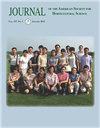Grafting Tobacco onto Nutrient-efficient Rootstocks Improves Photosynthesis
IF 1.1
4区 农林科学
Q3 HORTICULTURE
Journal of the American Society for Horticultural Science
Pub Date : 2021-06-02
DOI:10.21273/JASHS05041-21
引用次数: 2
Abstract
Potassium deficiency is a major problem limiting tobacco (Nicotiana tabacum) growth, and grafting has the potential to alleviate it. To compare the photosynthetic performance of grafted tobacco under different potassium levels, tobacco Yunyan 87 (main cultivar) and Wufeng No. 2 (potassium high-efficiency cultivar) were selected to conduct mutual grafting trials in the form of hydroculture with two potassium supply levels (5 mmol·L−1 K and 0.5 mmol·L−1 K). The plant growth, gas exchange parameters, chlorophyll a fluorescence, and the initial ribulose-1,5-bisphosphate carboxylase-oxygenase (RuBisCO) activity were measured. The results showed that potassium deficiency could significantly decrease the net photosynthetic rate, stomatal conductance (gS), and transpiration rate in the tobacco leaves, resulting in nonstomatal restriction. Grafting could effectively alleviate this problem. The actual quantum yield of photosystem II (PSII) photochemicals in ‘Yunyan 87’ increased 29.4% and 20.3% by grafting, respectively, under normal and low potassium levels. Compared with nongrafted ‘Yunyan 87’, grafting also effectively improved the electron transfer efficiency of PSII in the tobacco leaves under low potassium stress by reducing nonradiation energy dissipation and enhancing the initial activity of RuBisCO. From this study, it can be known that grafted tobacco plants can improve their photosynthesis by alleviating the nonstomata restriction of leaves under potassium stress and improving the electron transfer efficiency of PSII.嫁接烟草到营养高效的砧木上提高光合作用
钾缺乏是限制烟草(Nicotiana tabacum)生长的主要问题,嫁接有可能缓解它。为比较不同钾水平下嫁接烟草的光合性能,选择烟叶云烟87(主品种)和五峰2号(钾高效品种)在5 mmol·L−1 K和0.5 mmol·L−1 K两个钾供应水平下进行水培互接试验,测定植株生长、气体交换参数、叶绿素a荧光和初始核酮糖-1,5-二磷酸羧化酶加氧酶(RuBisCO)活性。结果表明,缺钾可显著降低烟草叶片净光合速率、气孔导度和蒸腾速率,造成非气孔限制。嫁接可以有效地缓解这一问题。在正常和低钾水平下,‘云烟87’光系统II (PSII)光化学物质的实际量子产率通过嫁接分别提高了29.4%和20.3%。与未接枝的‘云烟87’相比,接枝还通过减少非辐射能量耗散和提高RuBisCO的初始活性,有效提高了低钾胁迫下烟草叶片中PSII的电子传递效率。从本研究可知,嫁接烟草植株可以通过减轻钾胁迫下叶片的非气孔限制,提高PSII的电子传递效率来改善其光合作用。
本文章由计算机程序翻译,如有差异,请以英文原文为准。
求助全文
约1分钟内获得全文
求助全文
来源期刊
CiteScore
3.80
自引率
0.00%
发文量
31
审稿时长
2 months
期刊介绍:
The Journal of the American Society for Horticultural Science publishes papers on the results of original research on horticultural plants and their products or directly related research areas. Its prime function is to communicate mission-oriented, fundamental research to other researchers.
The journal includes detailed reports of original research results on various aspects of horticultural science and directly related subjects such as:
- Biotechnology
- Developmental Physiology
- Environmental Stress Physiology
- Genetics and Breeding
- Photosynthesis, Sources-Sink Physiology
- Postharvest Biology
- Seed Physiology
- Postharvest Biology
- Seed Physiology
- Soil-Plant-Water Relationships
- Statistics

 求助内容:
求助内容: 应助结果提醒方式:
应助结果提醒方式:


